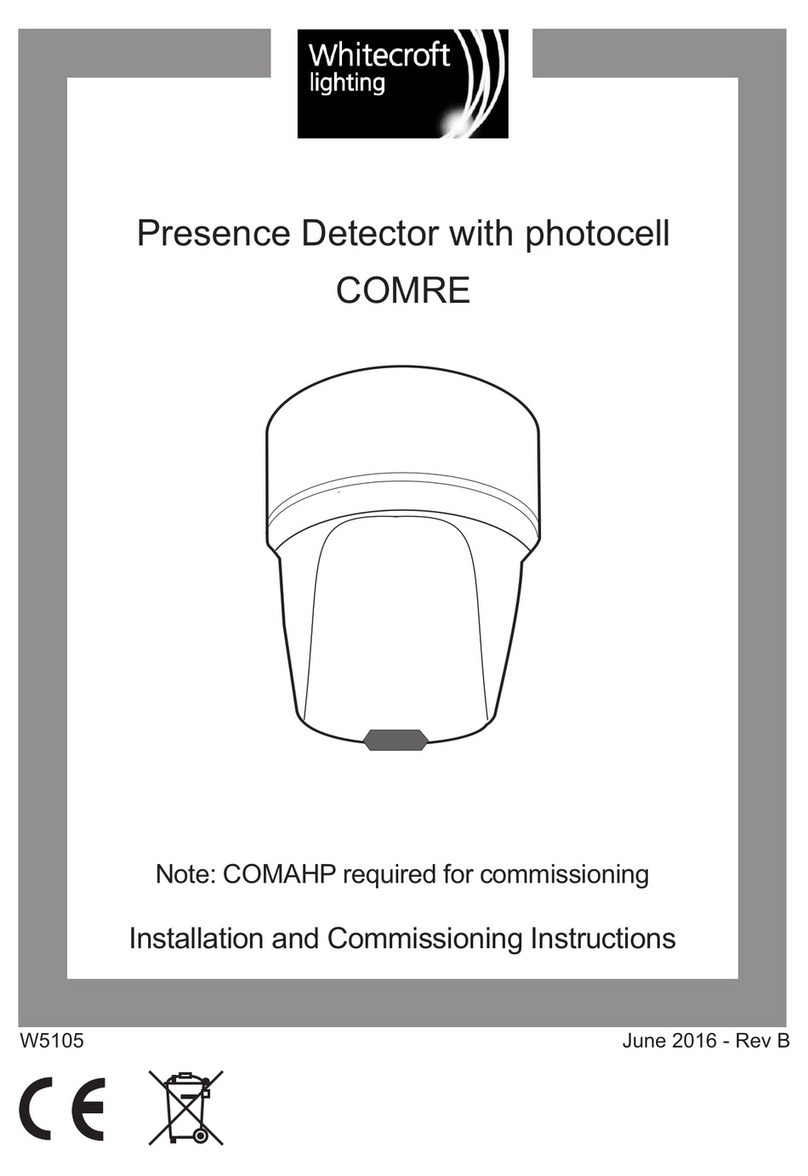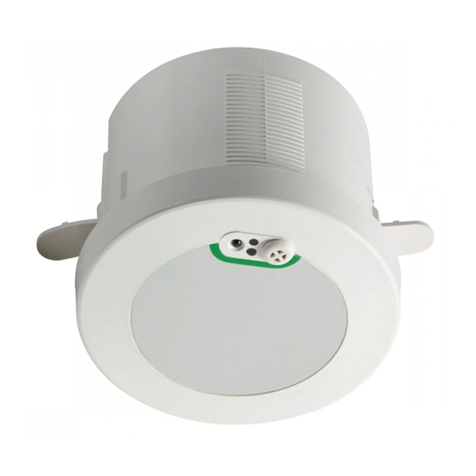
Photocell Control
i) Regulating Photocell
Regulating photocell control tries to maintain a constant level of total illumination in the space controlled by
dimming and brightening the controlled luminaires to compensate for changes in illumination from other
sources.
With the photocell configured as DISABLED the Regulating Control module is influenced only by the BRIGHT-
OUT setting. BRIGHT-OUT = YES allows it to hold-off the lights at the start of occupancy if natural light already
exceeds SET-POINT LOW and to extinguish the lights if total light, during occupancy after the controlled
luminaires have been dimmed to minimum, exceeds SET-POINT HIGH continuously for a period equal to the
OFF DELAY . The lighting is restored immediately if the illumination level subsequently drops below SET-
POINT LOW.
If the photocell is configured for ACTIVE or PASSIVE control of the relay switched load then the Regulating
Control module adopts the decision made by the Switching Control module in the case of turn-on inhibit on
entry, but still obeys the BRIGHT-OUT YES/NO setting with regard to turn-off during occupancy.
ii) Switching Photocell (PHOTOCELL: ACTIVE or PASSIVE)
Both ACTIVE or PASSIVE modes hold off the controlled lighting on entry when natural light is sufficient, i.e.
SET-POINT LOW is exceeded, but only ACTIVE mode will extinguish the lighting if natural light increases
sufficiently during occupancy, i.e. SET-POINT HIGH is exceeded continuously for a period equal to OFF
DELAY. The lighting is restored immediately if the illumination level subsequently drops below SET-POINT
LOW.
iii) Photocell DISABLED
If the photocell is configured as DISABLED for relay Switching Control it will have no effect on the control of that
load, which will be ON continuously during periods of occupancy unless commanded OFF via manual switch
or infrared control. The photocell readings are still available for use by the Regulating Control module while in
this mode.
Programming the Photocell Set-points
The parameters SET-POINT LOW and SET-POINT HIGH program the detector’s photocell response
The SET-POINTS can be manually programmed as numbers between 1 (darkest) and 1023 (brightest).
This number is not scaled to correlate with ‘lux’ measurements made using a light meter, but nevertheless is a
true representation of the light level perceived by the detector. To assist with finding the appropriate SET-
POINT settings, the light level currently perceived by the photocell can be viewed on the COMAHP screen
briefly, following a download operation. The number represents the light level read immediately before the
download took place.
Tip: Turn the lights off (UTILITIES / REMOTE using the COMAHP COMMAND/PLUS/GAMMA / IR /
COMHC) to measure the perceived light level with no contribution from the controlled lighting.
Alternatively the SET-POINTS can be configured semi-automatically;
i) The Primary Interest is the Regulating Control Output.
With the photocell configured as DISABLED:-
Using COMAHP (UTILITIES / COMMAND/PLUS/GAMMA / SET LIGHT LEVEL) or COMHC (+,- Scene 1)
set the required light output from the controlled luminaires and then press and hold OK (COMAHP) or Scene
1 (COMHC) until the controlled lights "blink" to indicate that a new SET-POINT LOW has been stored and a
calculated SET-POINT HIGH has also been inserted. Using the COMAHP the photocell can now be re-
configured as ACTIVE or PASSIVE if required.
5W4413F




























